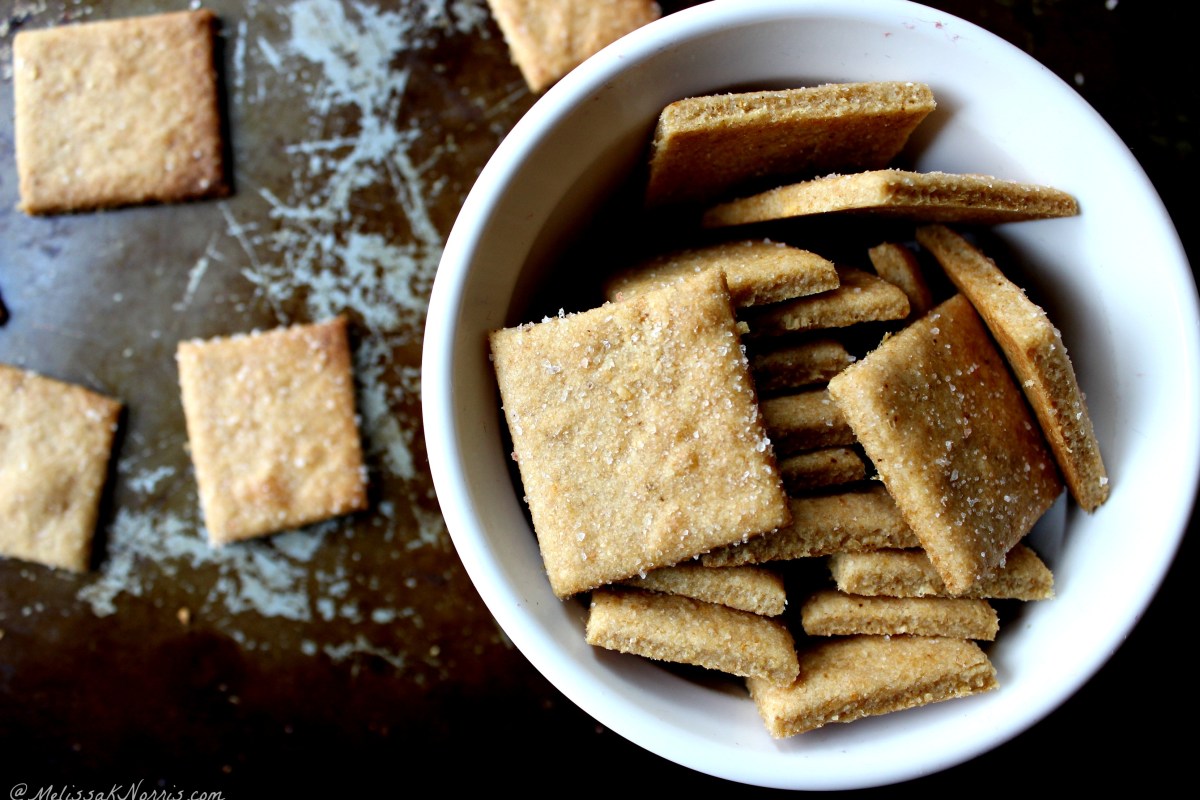Craving the satisfying crunch of homemade crackers but avoiding eggs? This guide unveils the secrets to crafting perfectly crispy, egg-free crackers right in your own kitchen. Forget bland, store-bought options; prepare to embark on a culinary adventure where you’ll master the art of ingredient selection, dough manipulation, and baking techniques to achieve that irresistible shatteringly crisp texture. We’ll explore diverse flavor combinations, ensuring your crackers are as unique and delicious as you are.
From understanding the properties of different flours and their impact on crispiness to mastering the nuances of dough consistency and baking temperatures, we’ll equip you with the knowledge and confidence to create crackers that will impress even the most discerning palates. Get ready to transform simple ingredients into a symphony of textures and tastes—a testament to your culinary prowess.
Recipe and Step-by-Step Instructions

Creating crispy egg-free crackers at home is surprisingly simple and yields delicious results. This recipe utilizes readily available ingredients and straightforward techniques to achieve a satisfyingly crunchy texture. The following steps provide a detailed guide, ensuring a successful outcome.
Ingredients
This recipe yields approximately 24 crackers. Adjust quantities as needed.
- 1 cup all-purpose flour
- 1/2 teaspoon salt
- 1/4 teaspoon baking powder
- 1/4 cup olive oil
- 1/2 cup water (or more, as needed)
- Optional: 1/4 teaspoon dried herbs (rosemary, thyme, or oregano), or spices (garlic powder, onion powder)
Mixing the Dough
The initial stage involves combining the dry ingredients and gradually incorporating the wet ingredients to form a workable dough. The dough should be smooth and slightly elastic, but not sticky.
- In a large bowl, whisk together the flour, salt, and baking powder. The mixture will appear light and fluffy, a pale off-white color.
- Add the olive oil and any optional herbs or spices. Use a fork to combine the oil and dry ingredients until the mixture resembles coarse crumbs. At this point, the mixture will take on a slightly oily appearance and a light, sandy texture.
- Gradually add the water, mixing with a fork until the dough starts to come together. The dough will initially be crumbly, then gradually form into a cohesive mass. The color will remain a pale off-white, though the addition of herbs or spices will introduce variations in color.
- Turn the dough out onto a lightly floured surface and knead for 2-3 minutes until it forms a smooth, slightly elastic ball. The dough will become more uniform in color and texture, transitioning from crumbly to a soft, pliable consistency.
Rolling and Cutting the Dough
This phase focuses on achieving a uniform thickness for even baking and optimal crispness. Visual cues are crucial for ensuring the crackers are consistently thin.
- On a lightly floured surface, roll out the dough to about 1/8 inch thickness. The dough will initially be somewhat resistant to rolling, but will gradually become more pliable. The color remains consistent.
- Use a sharp knife or pizza cutter to cut the dough into desired shapes and sizes. You can create squares, rectangles, circles, or any shape you prefer. The cut edges will be clean and well-defined.
Baking the Crackers
The baking process is crucial for achieving the desired level of crispness. The crackers will undergo a significant visual transformation during baking.
- Preheat oven to 350°F (175°C). Line a baking sheet with parchment paper.
- Arrange the cut crackers on the prepared baking sheet, leaving a small space between each cracker. The crackers will appear pale and slightly soft at this stage.
- Bake for 12-15 minutes, or until the edges are golden brown and the crackers are crispy. During baking, the crackers will gradually darken in color, becoming a light golden brown. The texture will transition from soft and pliable to crisp and brittle.
- Remove from oven and let cool completely on a wire rack. Once cooled, the crackers will be completely crisp and ready to enjoy. They will have a deep golden-brown color, and a noticeably crunchy texture.
Making crispy, egg-free crackers at home is now within your reach! By following the steps Artikeld in this guide, you’ve unlocked the ability to craft delicious, customizable crackers that cater to dietary needs and personal preferences. Remember, experimentation is key; don’t hesitate to explore diverse flavor profiles and baking techniques to find your signature cracker recipe. The satisfying crunch and the pride of creating something delicious from scratch are rewards in themselves. So, gather your ingredients, preheat your oven, and embark on this rewarding culinary journey!
Top FAQs
Can I store leftover crackers?
Yes! Store your cooled crackers in an airtight container at room temperature for up to a week, or freeze them for longer storage.
What if my crackers are too soft?
Try increasing the baking time or temperature slightly. Ensure your dough is rolled thinly and that you’re using a baking sheet that allows for good airflow.
Can I use other types of flour?
Yes, but the results may vary in terms of texture and crispiness. Experiment with different flour blends to find your preferred outcome.
What are some alternative egg-free binders?
Chia seeds, flax seeds, or applesauce can be used as effective egg-free binders in cracker recipes.


